
|
It was common practice for interurban companies at the turn of the century to open their own amusement parks and resort along the line to give riders a destination for recreation and generate income through "pleasure riding." Avon Beach Park was just such a resort, opened by the Lorain & Cleveland Railway in 1898. The park was located on 20 acres (or 30 acres, reports vary) along Lake Erie just north of the Beach Park station. Amenities and attractions included a large two story pavillion and dance hall, summer cottages, a swimming beach, an outdoor chapel, fields for picnicking and baseball, and wooded land. Although a popular destination in the early part of the century, the attraction and profits waned over the park's 25 year existence. The interurban business itself was becoming less profitable and in 1923 the Lake Shore Electric sold the park property to the Cleveland Electric Illuminating Company. The $300,000 price brought the LSE much needed capital, and CEI got a site for their new Avon power house. Beach Park Powerhouse The name Beach Park also refered to the Lake Shore's own power house, located along the lake next to the park. Like the station, this power house was built by the Lorain & Cleveland in 1897. Originally using four 300 horsepower boilers it produced 625 volts DC. In 1906-1907 the power house was enlarged, a second smoke stack erected, and new 3000 horsepower boilers and generators installed to produce 16,500 volt 25 cycle AC power. A siding from the station allowed the railway to deliver coal to fire the boilers and haul out cinders for use as ballast. Coal was received via an interchange with the Nickel Plate Road in Lorain, then moved to Beach Park by work motors. An odd, 14 foot, single-truck work motor (#405) was purchased in 1918 for the job of switching cars in and out of the power plant. Beach Park was the last power house owned by the Lake Shore Electric as they shifted to purchasing the new standard 60 cycle power from other suppliers. Plans were already in place to shut down the obsolete plant and begin purchasing electricity from the new CEI plant, which broke ground early in 1925, when disaster struck. On the night of August 21, 1925 a transformer in the basement of the old power house exploded, causing a fire that spread rapidly and consumed all but the brick walls. Not only did this knock out power to the eastern end of the interurban line, but also blacked out the communities which received their electricity from the Lake Shore. Substations along the line were hastily refitted for 60 cycle AC and power was purchased from the Ohio Public Service Company in Lorain until the CEI power plant was completed and went online August 4, 1926. Avon Beach & Southern Early in the century the LSE had great hopes for Beach Park, beyond the station, resort and power house. In fact railway officials intended to grow Beach Park into a town in itself. Lots were sold, homes built, and plans laid for a water plant to serve them. At the same time a new LSE subsidiary, the Avon Beach & Southern, was built connecting Beach Park to South Lorain (and Elyria by way of the Lorain Street Railroad.) The Avon Beach & Southern was most likely built to take early advantage of a massive expansion proposed for the steel mill at South Lorain and make the land and homes at Beach Park more attractive. In the end the steel mill expansion and the improvements at Beach Park never occurred, leaving the AB&S division without much purpose. Furthermore, the tornado which struck Lorain in 1924 severely damaged the electrical lines and poles of the AB&S, and the LSE deemed it was not worth the cost of repairing the unprofitable branch. In 1926 the property was purchased by the Avon Railroad, a subsidiary of CEI, for the purpose of hauling coal from the Nickel Plate Road to the power plant. The right-of-way south of the plant was expanded into a railyard and a concrete and steel trestle was built to pass over the LSE tracks and Lake Road. This arrangement outlived the Lake Shore Electric and for many years the railyard was the only location where LSE tracks remained not only in place, but in use. In the 1960's these last rails were removed during major reconstruction which altered the railyard and replaced the Avon Railroad trestle with the present conveyor system for transfering coal into the CEI plant. |
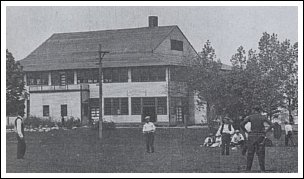
Beach Park resort. (W.A. McCaleb) |
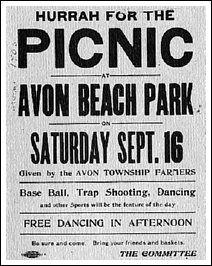
in 1906. (Dennis Lamont) |
|
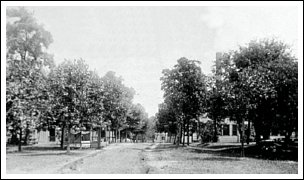
power plant in background. (Dennis Lamont) |
|

the Avon power plant. (Street Railway Review) |
|
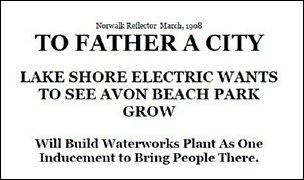
city at Beach Park. (Dennis Lamont) |
|
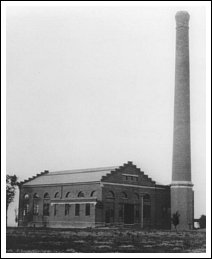
shown here in 1902. (Gilbert Hodges photo) |

(Dennis Lamont) |
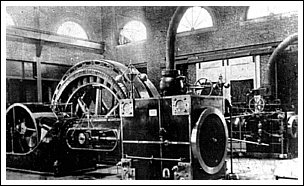
(Thomas Patton) |
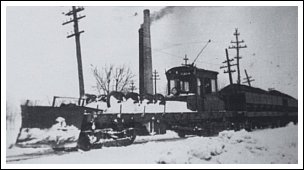
the power house for use as ballast. (Thomas Patton) |
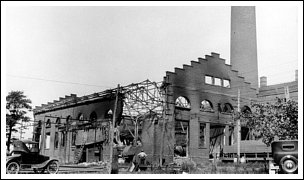
(Thomas Patton) |
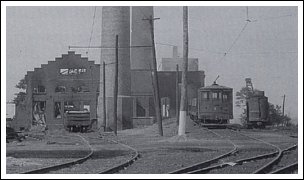
(Ralph H. Sayles) |
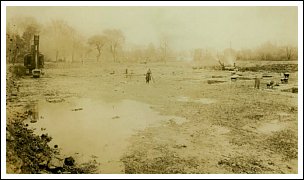
the CEI power plant in 1925. (Avon Lake Public Library) |
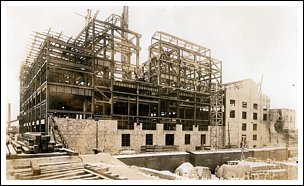
of Beach Park plant visible at far left. (Thomas Patton) |
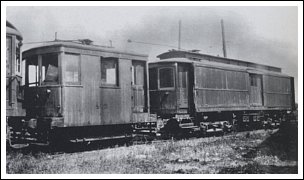
scrap line at Sandusky in 1939. (Thomas Patton) |

station. CEI power plant in background. (Bill Volkmer) |

trestle into the CEI power plant. (Dennis Lamont) |

former Avon Beach & Southern division. (Dennis Lamont) |
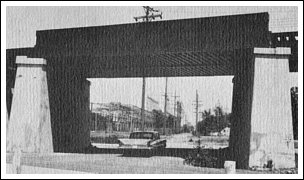
seen here in early 1960's. (Dennis Lamont) |
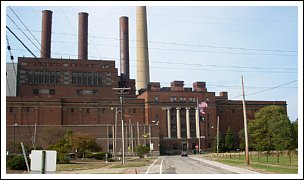
from site of stop 66 in 2010. (Drew Penfield photo) |
|
|
|